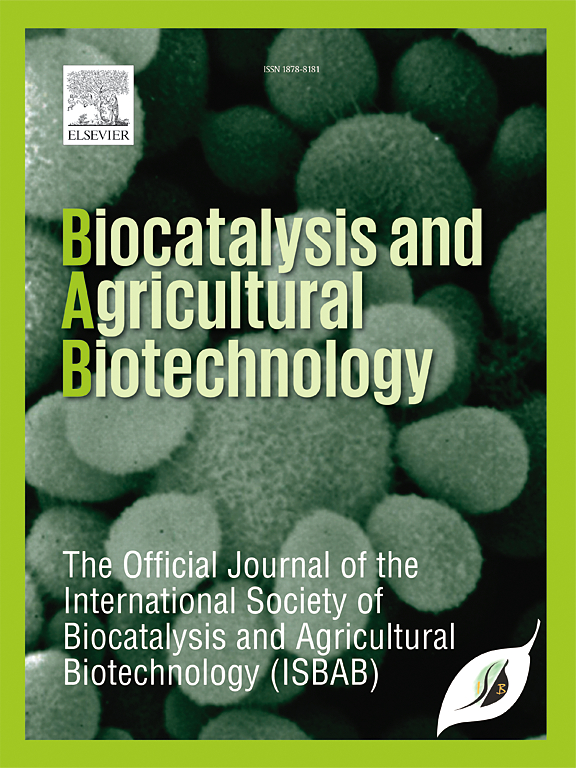Valorization of palm petiole waste as natural biocoagulants: Optimizing coagulation-flocculation for sustainable wastewater treatment and advancing circular economy in agriculture
IF 3.4
Q2 BIOTECHNOLOGY & APPLIED MICROBIOLOGY
引用次数: 0
Abstract
This study investigates the potential of palm petiole waste (PPW) and its extracted lignin as natural biocoagulants for removing methylene blue, crystal violet dyes, and turbidity from wastewater. Comprehensive characterization using X-ray diffraction, fourier-transform infrared spectroscopy, scanning electron microscopy coupling with energy-dispersive X-ray spectroscopy, X-ray fluorescence, and elemental analysis revealed the distinct physicochemical properties of PPW and lignin. A Box-Behnken experimental design optimized coagulation conditions, achieving 98.26 % pollutant removal with PPW and 90.17 % with lignin. Crucially, PPW's superior performance stems from a synergy of adsorption, charge neutralization by metal salts, and bridging effects, while lignin relies primarily on adsorption and bridging. This challenges the notion that lignin alone dictates coagulation efficacy in lignocellulosic wastes. The study also explored the economic and environmental implications of using PPW as a bio coagulants-flocculant, demonstrating significant reductions in carbon footprint, energy consumption, and water use compared to conventional chemical coagulants.

求助全文
约1分钟内获得全文
求助全文
来源期刊

Biocatalysis and agricultural biotechnology
Agricultural and Biological Sciences-Agronomy and Crop Science
CiteScore
7.70
自引率
2.50%
发文量
308
审稿时长
48 days
期刊介绍:
Biocatalysis and Agricultural Biotechnology is the official journal of the International Society of Biocatalysis and Agricultural Biotechnology (ISBAB). The journal publishes high quality articles especially in the science and technology of biocatalysis, bioprocesses, agricultural biotechnology, biomedical biotechnology, and, if appropriate, from other related areas of biotechnology. The journal will publish peer-reviewed basic and applied research papers, authoritative reviews, and feature articles. The scope of the journal encompasses the research, industrial, and commercial aspects of biotechnology, including the areas of: biocatalysis; bioprocesses; food and agriculture; genetic engineering; molecular biology; healthcare and pharmaceuticals; biofuels; genomics; nanotechnology; environment and biodiversity; and bioremediation.
 求助内容:
求助内容: 应助结果提醒方式:
应助结果提醒方式:


